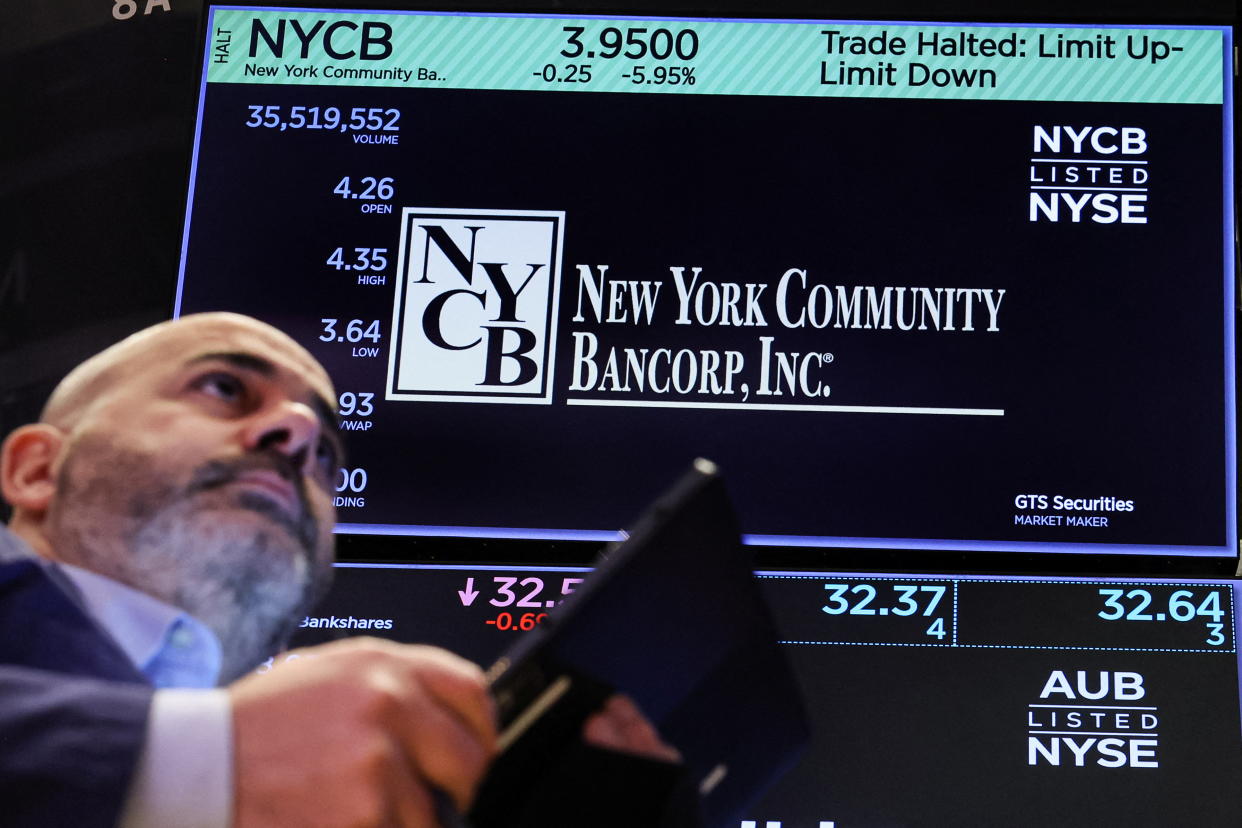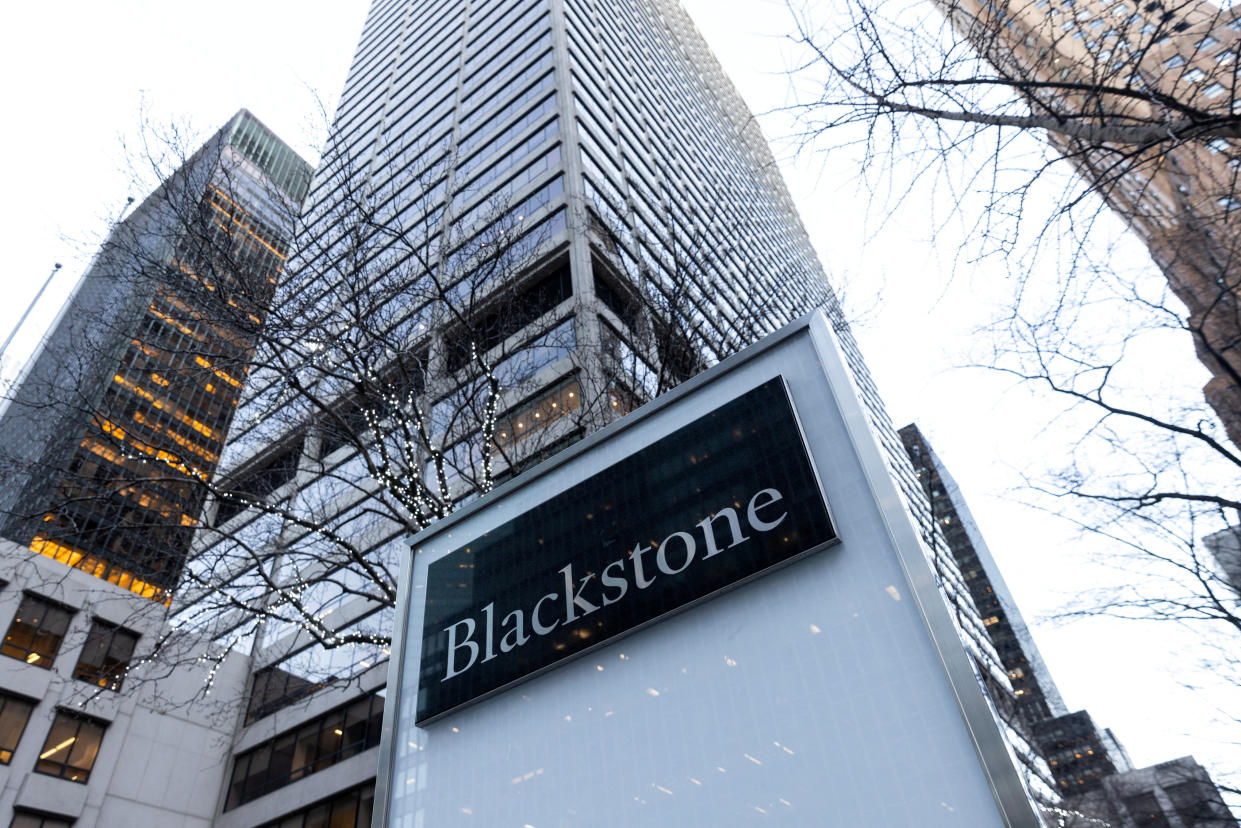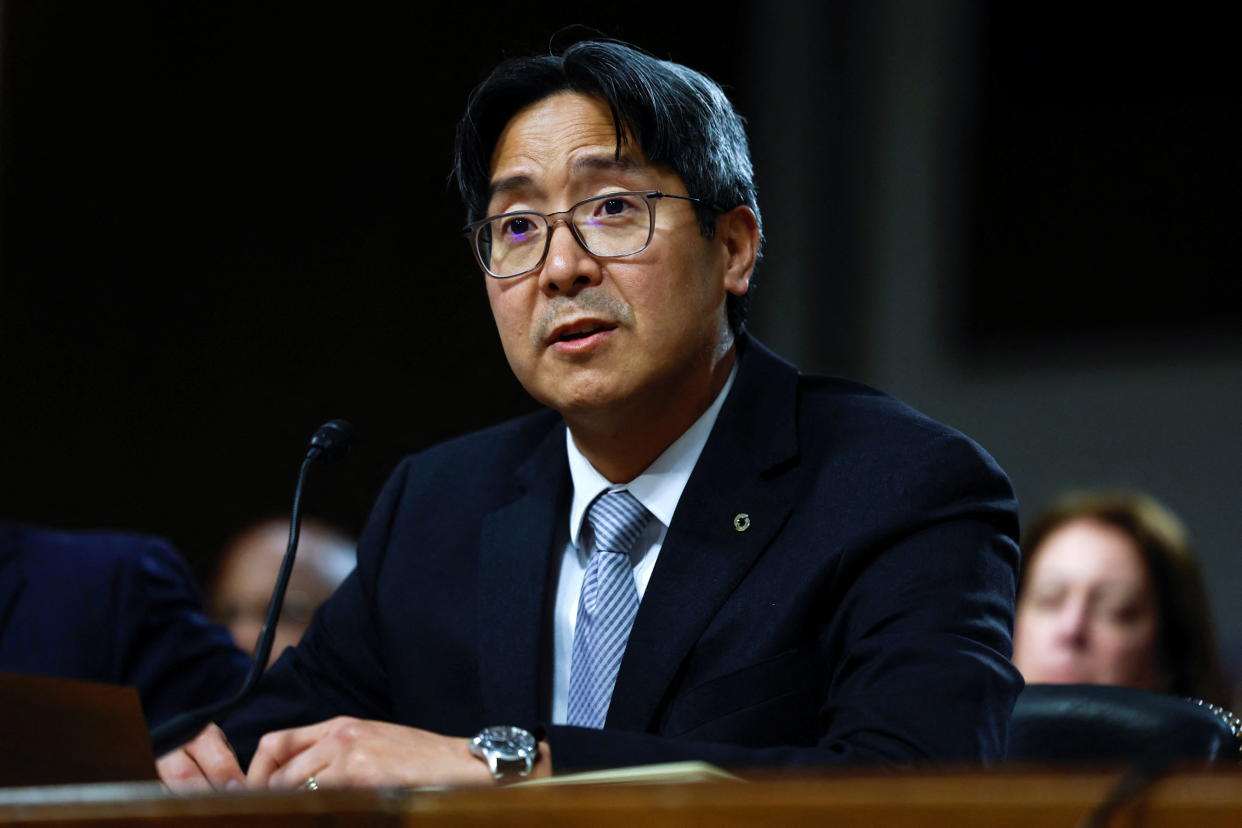Private equity is helping banks shed some of their risks
Troubled regional lender New York Community Bancorp (NYCB) is trying to show investors that it is getting a better handle on the risks embedded in its massive loan book.
One option: Shift some of those risks to private equity firms or Wall Street money managers.
"We are right at the doorstep of deciding whether we're going to move forward" on such an arrangement, Joseph Otting, NYCB CEO, told analysts earlier this month.
The potential transaction for NYCB is what’s known as a credit risk transfer — and it’s quickly becoming one of the hottest ways for banks to alleviate their regulatory burdens, protect against future losses, and navigate through a challenging period for the industry.
These transfers also highlight the rising importance of private equity firms, hedge funds, and other giant asset-management firms as they push deeper into the world of private credit.

The CRTs are structured like insurance policies: A bank issues credit-linked notes to an outside investor that amount to a portion of that lender’s loan portfolio — in exchange for cash.
The big benefit to the bank is that it is protected against future losses and no longer has to hold capital against the assets. The benefit to the investor is that it collects regular interest payments from the bank.
“It's banks buying an insurance policy on a basket of loans,” Josh Siegel, CEO of StoneCastle Partners, told Yahoo Finance.
The cost of these deals for banks rises depending on the riskiness of the loans, and thus most banks are choosing to seek insurance against some of their better assets.
That also helps explain why these deals are so attractive to private equity, hedge funds, and asset management firms, including BlackRock (BLK), Blackstone (BX), Apollo (APO), Ares (ARES), and KKR (KKR).
"We've been doing this with a variety of banks who are highly creditworthy," Blackstone COO Jon Gray told analysts during a recent earnings call.
It helps banks with their regulatory and balance sheet pressures, "and we’re able to generate favorable returns," he added, calling the arrangement "a win-win."
These deals — which also are known as synthetic risk transfers or capital relief trades — have been around for a while, especially in Europe, where banks have grown accustomed to aggressive capital requirements from their regulators.

Last year investors put up roughly $25 billion in capital across $300 billion of bank loan portfolios worldwide, a 25% increase from 2022, according to Structured Credit Investor. The bulk of those trades occurred in Europe.
They have been less common in the US until now, beyond some government-sponsored entities such as Fannie Mae, which turned to these deals following the 2007-2009 financial crisis.
But the demand for them is on the rise in the US as regulators prepare a new set of regulations known as the "Basel 3 endgame," which will likely require banks to hold even more capital to provide greater buffers against future losses.
Regulators are trying to finalize those rules this year following pushback from banks.
The volume of these credit risk transfers is expected to grow by 20% this year, according to Mark Fontanilla, a fixed-income strategist who has created an index measuring the transactions.
"We are seeing this trend spread from Europe to the US," KKR co-CEO Scott Nuttall said during the firm’s recent earnings call.
'We need to approach it with great caution'
Some of the recent deals in the US ranged from small banks to some of the biggest in the country.
Merchants Bank of Indiana issued $158 million in credit-linked notes on $1.1 billion of nursing and senior housing loans, and regional banks US Bancorp (USB) and Huntington (HBAN) each transferred hundreds of millions of dollars worth of risk on auto loans.
Huntington — which is based in Columbus, Ohio — said the transaction cost an estimated $23 million in fees and other expenses and freed up about $2.4 billion in capital.
Some industry giants have also taken advantage. Morgan Stanley (MS) purchased $250 million worth of protection on some of its loans, while JPMorgan Chase (JPM) has issued credit-linked notes on its auto loans since 2021.
Wells Fargo (WFC) is also weighing such a deal, according to Bloomberg.
Regulators thus far don’t sound overly concerned about these arrangements. The Fed last year broadened the criteria for how banks can use credit-linked notes to mitigate risk.

Months later, its top banking regulator, Michael Barr, told Congress, "We have approved them on a case-by-case basis."
"We're going to wait and see how those instruments perform," said Barr, the Fed’s vice chair for supervision. "If they perform as intended, then they might be more generally available," he added.
During that same hearing, other regulators offered some caution.
"I think there is considerable uncertainty and we need to approach it with great caution and attention," said FDIC Chair Martin Gruenberg.
Acting Comptroller of the Currency Michael Hsu agreed, saying, "They do require heightened attention, especially when risk transfer is thought of as risk elimination, which it is not."
"I’ve never heard of a regulator complaining," Siegel of StoneCastle Partners told Yahoo Finance. "They know it's a bit of a game but it's a game they know is legal because they wrote the rules."
There are still industry observers who say these deals show some resemblance to the credit default swaps that created so many problems during the 2008 financial crisis.
"It gives us shivers," said banking analyst Glenn Schorr during a recent Blackstone earnings call. "It reminds us about 16 years ago."
Warren Kornfeld, a senior vice president for Moody’s Ratings who monitors these deals, said "there are similarities" but "the difference, hopefully, is the risk of the underlying asset."
David Hollerith is a senior reporter for Yahoo Finance covering banking, crypto, and other areas in finance.
Click here for in-depth analysis of the latest stock market news and events moving stock prices.
Read the latest financial and business news from Yahoo Finance
